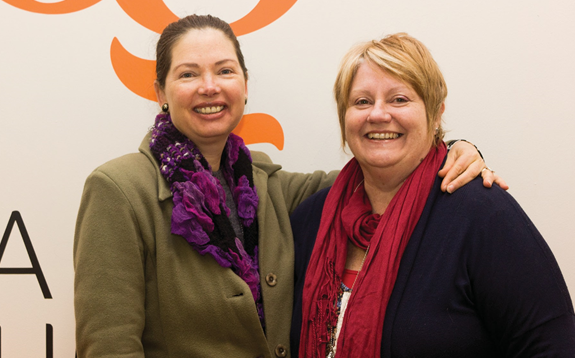
We need to tell the story differently. This is the opinion of Prof Mellony Graven, holder of the National Research Foundation Chair in Numeracy Education at Rhodes, one of only five in the country.
Speaking about teacher development as part of the work done by the Numeracy Chair Project, Graven is clearly excited about the progress made over the last four to five years in building relationships and getting buy-in from teachers around the way Numeracy is taught at Foundation Phase level. A group of 38 teachers meet regularly in Grahamstown to workshop new ideas and methods, share good practice and get support from the Project. “We have seen teachers a lot more confident about trying out different approaches in their classrooms, and about letting learners experiment with alternative ways of getting to answers; they don’t feel they have to be in absolute control of the knowledge,” says Graven. This is why she feels there is a need to present an alternative story to the one that always focuses on teacher deficits and poor results.
One of the key features of the Numeracy Chairs, distinguishing them from the way that other NRF chairs work, is the fact that they are expected to do development work alongside the research. “It’s like running a research project and an NGO all rolled into one, and it’s very challenging,” Graven points out. But she would not have it any other way. It accords with her strongly-held belief that using teachers, learners or school sites purely for purposesof research is not ethical – there needs to be some form of reciprocity, of coming up with proposed solutions or at least working on those together with the research subjects.
The Numeracy Chair at Rhodes has succeeded in doing both high-end research and rolling out numeracy teaching and learning initiatives on the ground. Some 130 research outputs have been generated, ranging from peer-reviewed articles in top international journals to local conference papers. Graven is especially pleased about a whole edition of the South African Journal of Education that was devoted to Numeracy Education. “What we have managed to achieve with the Numeracy Chairs, is to raise the profile of this work and to create a recognised field of research,” she says.
In this first five-year phase of the Numeracy Chair, Graven has moved her NRF rating from C2 to C1, while two students have graduated with PhDs and seven with Masters Degrees. All of these postgraduate students have been required to run some form of intervention and to be involved with the work of the Chair on the ground. Establishing Maths Clubs at a variety of Grahamstown schools, initiating a homework project and facilitating Family Maths Days are some of the developmental efforts of the Chair’s project work that go hand in hand with the academic research. With additional donor support, the Maths Clubs have been expanded to more schools and to five aftercare sites. These clubs not only pique children’s interest in Mathematics, but also serve as important sites for experimentation and for gathering data. The homework project allows learners to practise at home and revisit the basic building blocks that they might be lacking.
Graven is confident that enough has been done for a further five-year contract to be approved by the NRF. Going forward, she would like to deepen the involvement in Foundation Phase numeracy teaching by expanding to further Grades (currently the focus is on Grades 3 and 4), to share key ideas with the relevant Government departments and district officials, and to expand the implementation of and research into Family Maths events.
